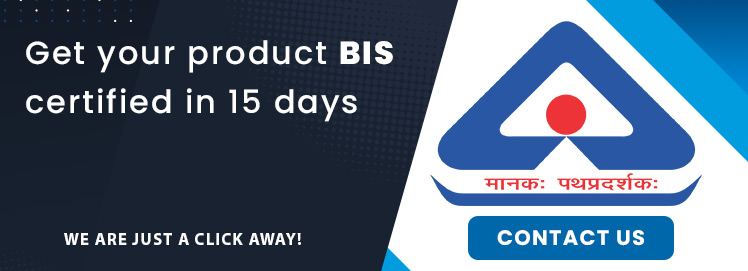Flat transparent Sheet Glass refers to a type of glass that is essentially manufactured in plane form. It is widely used for glass doors, windows, windshields, and transparent walls. These glasses are often subjected to a bending process to fit modern architectural and automotive applications.
This write-up takes a closer look at a standard governing these products and the process of securing BIS certification for flat transparent sheet glass.
IS 2835: 1987 – An Indian Standard for Flat Transparent Sheet Glass
IS 2835: 1987 is an Indian Standard that regulates various aspects of the flat transparent sheet glass. The standard primarily applies to sheet glass used in manufacturing silvered glass mirrors, photographic plates, toughened or laminated safety glasses, photographic plates, and glazing and framing purposes. As far as the design and appearance are concerned, these glasses have a transparent, fire-finished, glossy surface that appears smooth and plane but has a characteristic waviness.
The standard has classified sheet glass into four qualities as shown below:
AA Quality or Special Selected Quality (SSQ)
These glasses are of the highest possible quality and are used for the production of projection slides, photographic plates, and high-quality mirrors.
A Quality or Selected Quality (SQ)
This category of glasses is essentially used for glazing or mirror production.
B Quality or Ordinary Quality (OQ)
B-quality glasses are widely used for glazing and framing.
C Qualify or Greenhouse Quality (GQ)
These glasses are commonly used for greenhouse glazing, the production of frosted glass, flooring strips, etc.
- Sheet glass should be transparent, flat, and without any visible defects. Though it may have a light tint when viewed from the edge.
- The thickness range, nominal thickness, and dimensional tolerance on cut sizes should comply with the standard’s guidelines.
All these requirements play a vital role in securing the BIS certification for flat transparent sheet glass.
Tests to Be Performed On the Sheet Glass for Quality Assurance
The following tests are recommended in the standard for the quality assurance of the glass sheet. The tests below serve as a checklist to qualify for BIS certification for flat transparent sheet glass.
- Dimension test
- Bow test
- Thickness test
- Scratches, Rubs, and Crush test
- Reams, strings, and lines test
- Waviness test
A lab in which these tests are performed should be aptly resourced and staffed. The standard specifies how sampling and these tests should be performed.
The same is true for packaging and marking methods. Sheet glass packages should bear the following information for the sake of end-users.
- Name and quality of the material
- The nominal thickness
- Manufacturer’s name
- ISI marking
- Trademark if available
- Code or serial number as per the standard
The right to use the standard mark (ISI Mark) is only available to BIS registration holders. The grant of a BIS license will depend on how the company performs during the compliance assessment w.r.t BIS guidelines.
The following section will talk about what type of documents are required to apply for BIS registration and what steps need to be followed to secure the same.
Documents Required To Apply For BIS Certification for Flat Transparent Sheet Glass
The following list reflects the mandatory paperwork for the BIS certification for flat transparent sheet glass:
- Factory License granted by the state’s labor department
- Factory legal documents such as Partnership firm, COI, or any other paperwork
- Pollution NOC issued by SPCB[1]
- Fire NOC granted by respective Fire department
- Detail about in-house product testing lab and equipment therein.
- Calibration report of testing equipment wherever applicable
- The testing report of selected samples issued by BIS-known labs.
- A detailed production flowchart
- List of machinery relating to sheet glass production
Process of Obtaining BIS Certification of Flat Transparent Sheet Glass
The following section talks about the process that helps with application filing and obtainment of the BIS license:
Step 1: Apply For the BIS Application
To do so, simply visit the BIS portal and get access to the application listed under the ISI marking scheme. Once you get access, start filling up the application with legit details only. Avoid adding any information that you think is not accurate or valid.
E-application features the benefit of uploading documents online. Keep the format in check while uploading the paperwork. Finally, proceed to submit the application fee. The successful payment of the application fee would end the filing process.
Step 2: Company’s Inspection and Paperwork Checking
The Bureau of Indian Standard, after receiving the online application and documents, shall initiate a thorough inspection process of the paperwork followed by on-site vetting.
During the on-site inspection, the authority, with respect to the BIS norms, vets the premise inside out for non-compliance. This would be followed by the sample collection process under which the officials will collect some specimen(s) and send it to the certified lab for testing.
Step 3: Sample Testing By the Lab and Report Generation
The shared sample(s) will undergo the given tests in this step. Following this, based on the outcome of the tests, a detailed report shall be created, which will be shared by the applicant with the authority for the final review.
- Dimension test
- Bow test
- Thickness test
- Scratches, Rubs, and Crush test
- Reams, strings, and lines test
- Waviness test
Step 4: Report Review and Issuance of BIS License
This step involves the review of the lab report performed by the BIS officials for any non-compliance. Based on what the lab report depicts about the sample performance, the authority will either cancel or grant the BIS registration.
Conclusion
BIS Certification for Flat Transparent Sheet Glass set the stage for quality production. After being aware of the BIS norms and license compliances, manufacturers can tweak their production and testing process accordingly to achieve the utmost quality for their products. It is worth noting that non-licensees cannot affix the ISI marking on their products.
Also Read:
BIS ISI Certification For Transparent Float Glass: Process And Paperwork













